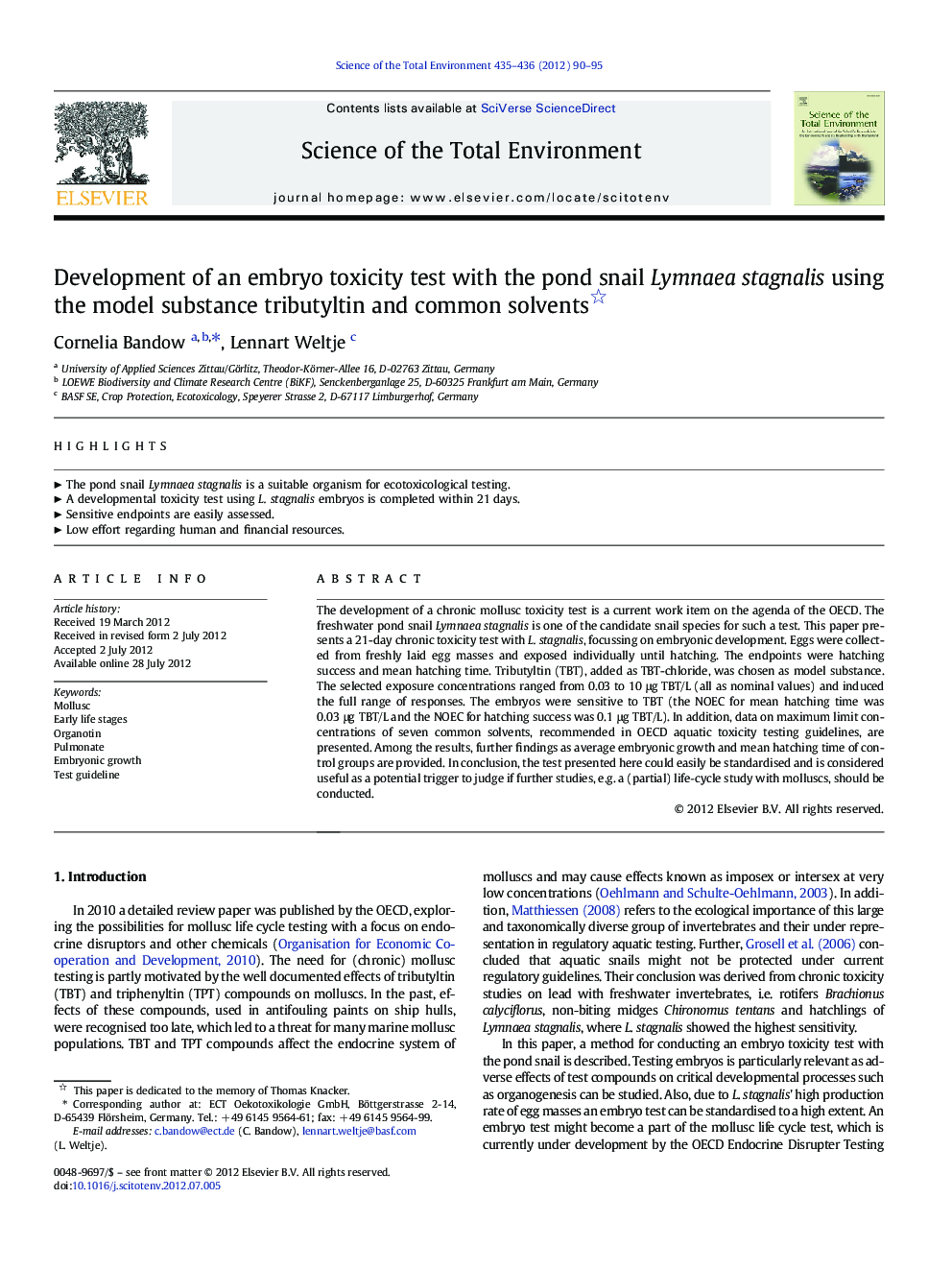| Article ID | Journal | Published Year | Pages | File Type |
|---|---|---|---|---|
| 4429246 | Science of The Total Environment | 2012 | 6 Pages |
The development of a chronic mollusc toxicity test is a current work item on the agenda of the OECD. The freshwater pond snail Lymnaea stagnalis is one of the candidate snail species for such a test. This paper presents a 21-day chronic toxicity test with L. stagnalis, focussing on embryonic development. Eggs were collected from freshly laid egg masses and exposed individually until hatching. The endpoints were hatching success and mean hatching time. Tributyltin (TBT), added as TBT-chloride, was chosen as model substance. The selected exposure concentrations ranged from 0.03 to 10 μg TBT/L (all as nominal values) and induced the full range of responses. The embryos were sensitive to TBT (the NOEC for mean hatching time was 0.03 μg TBT/L and the NOEC for hatching success was 0.1 μg TBT/L). In addition, data on maximum limit concentrations of seven common solvents, recommended in OECD aquatic toxicity testing guidelines, are presented. Among the results, further findings as average embryonic growth and mean hatching time of control groups are provided. In conclusion, the test presented here could easily be standardised and is considered useful as a potential trigger to judge if further studies, e.g. a (partial) life‐cycle study with molluscs, should be conducted.
► The pond snail Lymnaea stagnalis is a suitable organism for ecotoxicological testing. ► A developmental toxicity test using L. stagnalis embryos is completed within 21 days. ► Sensitive endpoints are easily assessed. ► Low effort regarding human and financial resources.
